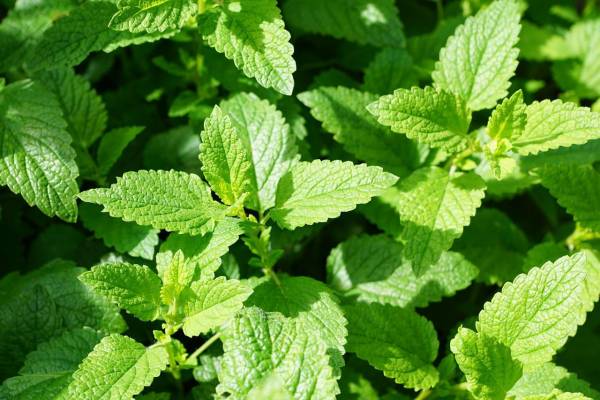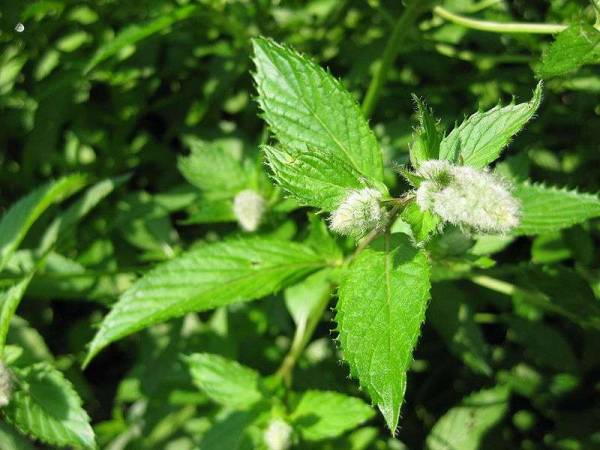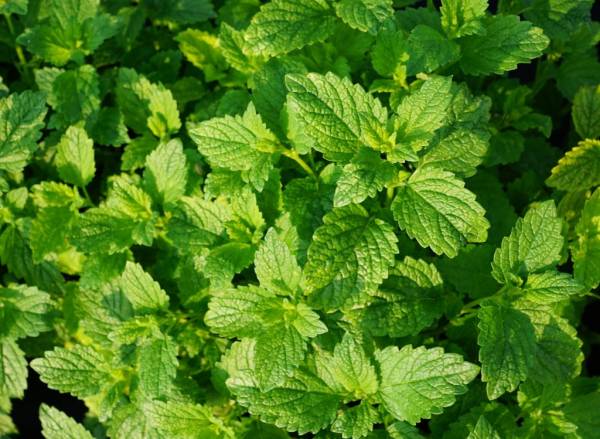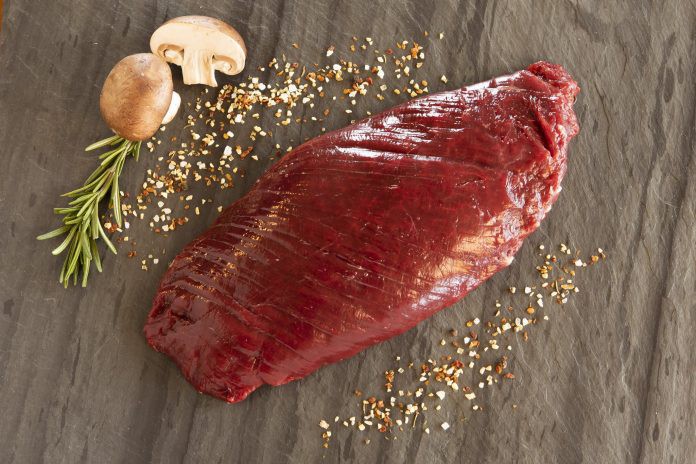Do you know about the 40 healing properties of Mint vegetable?
Mint vegetables are hot and dry, with many medicinal properties, and can be consumed in various forms such as fresh, dried, essential oil, brewed, powder, etc.
Mint vegetables is a common and widely used plant, most of which is located near water and grows throughout the year. Mint vegetables are also widely used in cosmetics, aromatherapy, and natural insecticides.

In Greek mythology, mint is known as a hospitality plant. Mint, known in India as a pundit, is widely used in Middle Eastern, Indian, British and American cuisines in tea, beverages, candy, jellies, syrups, ice cream, and more.
Nutritional value of mint:
Mint leaves have the highest amount of antioxidants compared to other plants. Mint vegetable oil contains phenolic acids, phytosterols, saponins, triterpenes, flavonoids, carotenoids, anthocyanins, and more. Mint vegetable oil is widely used for various purposes. This oil is widely used today to prepare foods, perfumes, and the treatment of various problems.
Benefits of mint and properties of this aromatic plant for treating diseases:
Mint to treat asthma:
Mint vegetables have a soothing effect and are very useful for asthma patients because it causes blockage in the nasal tube. However, the amount and frequency of Mint vegetable consumption should be controlled as excessive use may lead to nasal and gastric irritation.
Mint to help digestion:
Mint vegetables are soothing and have cleansing and detoxifying properties. It prevents inflammation of the stomach, cleans the mouth, and enhances digestion. This is due to the salivary glands’ activation in mint consumption, enabling digestive enzymes to produce sufficient amounts.
Reduction and treatment of respiratory disorders with mint:
Mint is used in tea or chewing gum to relieve congestion of the throat, nose, bronchitis, and lungs. It helps soothe the nose, throat, and airways and prevents long-term disorders that usually start with asthma or colds. Mint vegetables is an effective natural remedy for this disease and are used in ointments.

Mint for weight loss:
Consuming mint ensures that you healthily lose extra energy. Mint vegetables enable the release of digestive enzymes into the body to consume more fat for energy production. Another strategy is to use mint, and other foods are known to improve health, such as lemons. You can mix water with lemon-mint. This is a classic way to prepare your body for a new healthy path and lose weight healthily and naturally.
Mint to prevent allergies:
Mint vegetable oils are known to resist the release of certain chemicals in the body, leading to seasonal allergies and hay fever.
Mint vegetables are best eaten raw or as a tea to protect against allergies. These benefits are also beneficial for Mint vegetables leaves in coughs and other problems exacerbated by sudden and sudden muscle contractions in the surrounding area.
Mint to strengthen the liver:
Mint vegetables are known to affect the liver, and Mint vegetables are beneficial for increasing the liver’s strength due to their essential nutrients, including their soothing and soothing properties.
Mint vegetables ensure oral health:
Mint vegetables are a general air freshener and ensure the tongue and gums’ cleanliness, which prevents bacteria’s growth in the mouth. Therefore, mint is a prevalent ingredient used in the preparation of toothpaste and mouthwash.
Mint to prevent memory loss:
People who are regular users of mint are vigilant and intelligent. Mint vegetable is a well-known stimulant, which boosts long-term memory and alertness.
Mint for healthy skin:
Mint vegetables have itching and antiseptic properties and ensure complete cleansing of the skin. Treatment and removal of wounds caused by insect bites such as bees, mosquitoes. It is an inflammatory disease and is used as a common ingredient in repellent ointments.

Avoid depression with mint:
Mint vegetables is a very fragrant natural stimulant that increases energy in the body. It can be used as an oil or inhaler, or steam to reduce depression and fatigue.
Mint to help to breastfeed:
Mint vegetables help heal cracked nipples and irritable bowel syndrome. Using Mint vegetable oil on breast milk helps breast milk flow continuously without damaging sensitive skin and relieving nipple pain.
Mint to prevent cancer:
Research has shown that some of the active enzymes in Mint vegetables can prevent and treat cancer.
Mint to help with muscle cramps:
When the throat becomes red and irritated, coughing may damage the muscles around the neck and chest, accompanied by initial discomfort and inflammation along the esophagus. You may have noticed that after a full day of coughing, your throat and chest become very tired and sore, so using mint leaves is helpful.
Hundreds of years ago, people discovered that mint leaves could reduce inflammation and relax motor activity in muscles, which helps prevent inflammation caused by it. Today, herbs such as mint are packaged in a variety of hot beverages such as tea.
Mint to fight the effects of colds:
When you have a cold, you have a lot of personal side effects. Burning, pain, difficulty breathing, and excessive sputum are just a few of the distressing symptoms you may experience, but eating Mint vegetable leaves can help further reduce the disease’s annoying effects.
When the mint leaf works to reduce swelling, you will be more comfortable and relax. This reduces discomfort in the chest and throat. The activity performed in coughing is a significant waste of energy and puts pressure on your system, and makes you more prone to illness.

Mint vegetables improve hard breathing:
When you catch a cold, one of the worst consequences is that your airways become blocked by various inflammations. It can perform daily activities and even sleep deprivation.
This cyclical problem will complicate matters, as you will probably be in a weak and unhealthy position, but a great way to combat respiratory problems is to eat or chew a large piece of mint.
Due to mint leaves’ anti-inflammatory properties, eating a fresh mint will probably relieve the red and swollen areas inside your respiratory tract quickly. A great way to achieve these benefits is to add a fresh mint to your tea. Liquid and hot steam can be very penetrating and influential.
Mint leaves are rich in essential vitamins and minerals:
Mint leaves give good flavor to food, refresh the breath of those who eat it, and provide essential minerals to grow.
Phosphorus, iron, and calcium with vitamins C and A are essential for the repair and growth of skin cells. These vitamins and minerals also build up parts of the cell wall in your circulatory system vital to life. Fresh mint leaves are more popular than ever, and eating them means having a healthy body, so find foods that complement mint leaves’ flavor to get the most benefit.
Mint vegetable leaves contain various compounds that can help relieve pain and the gastrointestinal tract. This can help prevent bloating and painful reactions that may sometimes occur. This is especially true for people who suffer from a variety of digestive changes.
Mint leaves repel some bird insects:
Flying insects like mosquitoes and other pests can be a big problem and make you feel helpless. Some flying insects can even have terrible diseases that lead to lifelong diseases.
At the time, it made sense that you could do anything to protect yourself and your family from what might be life-threatening.
Mint leaves to help reduce bloating and gas:
Most people get embarrassed when they have to bloat. Some foods can cause bloating with gas. This can lead to the sudden and uncontrollable release of these gases, which is unpleasant for everyone.
If you ever hoped you could find a natural alternative to prevent this, mint leaves may be the answer. Consumption of mint leaves can prevent methane gas production because it stimulates the production of gastric juice.
Help reduces and controls pain with mint leaves:
In ancient times, people who had access to mint often used it for their wounds and small scratches to relieve pain. Mint vegetable leaves also have some antibacterial agents that help prevent some minor infections.
Studies have shown that mint leaves can limit pain response. They have even discovered that eating mint leaves also reduces pain.
Benefits of mint leaf juice:
Mint vegetables leave help digest food. So you can taste it and help your intestines. Mint vegetable leaves are cooling, and adding them to water will cool your drinks on a hot summer day.
How to make a glass of mint juice at home?
3 to 4 mint leaves
Pieces of ice
Water
4 to 6 drops of stevia extract (optional)
Wash it and crush them between your fingers. Pour it into a clean container, add ice, and if you use cold water, enjoy.
Possible side effects of mint leaf consumption:
In people with a history of gallstones, Mint vegetable leaves should be consumed only after consultation with a specialist. The same goes for pregnant women. Excessive consumption of mint leaves is not recommended.
What happens if you eat a lot of mint leaves?
Excess mint leaves are associated with side effects such as headache and heartburn. Mint leaf is an active ingredient in mint leaf tea. If you drink a lot of this tea, in addition to headaches and palpitations, you may also have side effects such as mucous membranes, skin irritation, and redness of the skin.
Menthol, mainly an active ingredient in Mint vegetable tea, can cause sore throats in adults and young children. A person with asthma should specifically avoid foods containing Mint vegetable leaves.
The recommended amount of mint:
You can eat mint leaves in different forms. These include oils, teas, or capsules. It is better to consume these items in limited quantities.
Consumption of mint leaf tea:
You can drink some mint leaf tea several times a day.
Use of mint leaf capsules:
You can not take more than 1-2 capsules.
Mint vegetables leaf oil or ointment:
You can apply cream or ointment on your skin to relieve itching and irritation. Use mint leaves for flavor and texture: it is better to use only 10% Mint vegetables oil with 90% ethanol.
Other precautions:
First of all, if you have a condition called “achlorhydria,” you should not eat Mint vegetable oil. Due to this stomach health problem, the stomach does not produce enough hydrochloric acid to digest food.
Second, eat small amounts of mint leaves that are safe for pregnant women or women. However, the exact amount of safe mint leaves is not known. Therefore, it is better not to consume more mint leaves during breastfeeding or pregnancy.
Finally, Mint vegetable leaf oil tends to cause anal irritation in people with diarrhea. So the next time you eat mint leaves, keep all these precautions in mind.
Also, it is widely used in beverages, ointments, inhalers, toothpaste, and so on. Due to its cooling properties and soothing effects, it is also used to relieve inflammation, burns, and wounds.
Cultivation of mint leaves:
Mint grows all over the world. Mint begins to grow with seeds, but a small plant is strong enough to grow to an incredible size. Mint leaves are ideally needed for rapid growth in humid, shady places and grow at relatively sunny temperatures.
Using mint leaves can have health benefits. These include relieving headaches and nausea, helping to treat colds, reducing depression, and more. However, it is better to consume this plant in small amounts so that you do not have to deal with the side effects of overeating mint leaves.
also read:
Nutritional value and properties of mung bean sprouts for health and beauty
Learn more about the properties and benefits of eggs
Properties of kidney beans for health and treatment of disease


